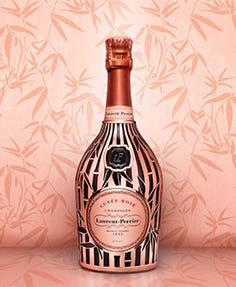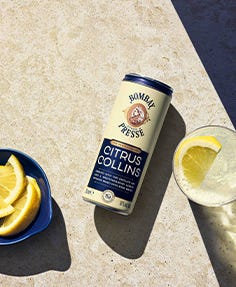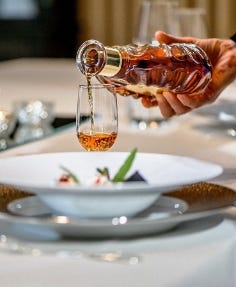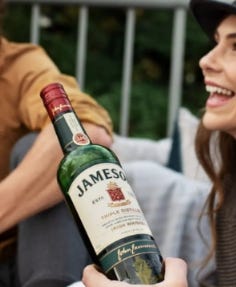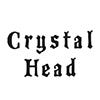Chartreuse Liqueurs
The Order of Chartreuse was more than 500 years old when, in 1605, at a Chartreuse monastery in Vauvert, a small suburb of Paris, the monks received a gift from Francois Hannibal d’ Estrées, Marshal of King’s Henri IV artillery : an already ancient manuscript from an “Elixir” soon to be nicknamed “Elixir of Long Life”.
This manuscript was probably the work of a 16th century alchemist with a great knowledge of herbs and with the skill to blend, infuse, macerate the 130 of them to form a perfect balanced tonic. In the early 17th century, only a few monks and even fewer apothecaries understood the use of herbs and plants in the treatment of illness. The manuscript’s recipe was so complex that only bits and pieces of it were understood and used at Vauvert.
At the beginning of the 18th century, the manuscript was sent to the Mother House of the Order – La Grande Chartreuse – in the mountains not far from Grenoble. Here an exhaustive study of the manuscript was undertaken.
The Monastery’s Apothecary, Frère Jerome Maubec, finally unravelled the mystery and, in 1737, drew up the practical formula for the preparation of the Elixir.
The distribution and sales of this new medicine were limited. One of the monks of La Grande Chartreuse, Frère Charles, would load his mule with the small bottles that he sold in Grenoble and other nearby villages.
Today, this “Elixir of Long Life” is still made only by the Chartreuse monks following that ancient recipe, and is called Elixir Vegetal de la Grande-Chartreuse.
This “liqueur of health” is all natural plants, herbs and other botanicals suspended in wine alcohol – 69% alcohol by volume, 138 proof.So tasty was this elixir that it was often used as a beverage rather than a medicine. Recognizing this, the monks, in 1764, adapted the elixir recipe to make a milder beverage which we know today as “Green Chartreuse» – 55% alcohol, 110 proof. The success of this liqueur was immediate and its fame was no longer restricted to the area around La Grande Chartreuse.
The French Revolution erupted in 1789. Members of all Religious Orders were ordered out of the country. The Chartreuse monks left France in 1793. They made a copy of the manuscript kept by one of them who remained in the Monastery.
Another Monk was in charge of the original. Shortly after leaving the “Grande Chartreuse” he was arrested and sent to prison in Bordeaux.
Fortunately, he was not searched and was able to secretly pass the original manuscript to one of his friends Dom Basile Nantas.
Dom Basile, convinced the Order would never come back to France and unable to make the Elixir himself, sold the recipe to Monsieur Liotard, a pharmacist in Grenoble.
Mr. Liotard never produced the Elixir.In 1810, when the Emperor Napoleon ordered all the “secret” recipes of medicines to be sent to the Ministry of the Interior, Monsieur Liotard duly followed the law and submitted the manuscript. It was returned to him marked “Refused”. Refused as not considered “secret”, already well known.
When Monsieur Liotard died, his heirs returned the manuscript to the Chartreuse Monks who had returned to their Monastery in 1816. In 1838, the Chartreuse distillers developed a sweeter form of Chartreuse : “Yellow Chartreuse” (40% alcohol, 80 proof).In 1935, Fourvoirie was almost totally destroyed by a landslide; manufacturing was transferred to Voiron where it is today.
The selection, crushing and mixing of the secret herbs, plants and other botanicals used in producing the liqueurs is done in the monastery by two monks.
Once mixed the ingredients are taken to Voiron were they are first left to macerate in carefully selected alcohol, then distilled.
Finally, these liqueurs are aged for several years in huge oak casks and placed into the world’s longest liqueur cellar for maturation.
A small portion of the liqueur is selected for special treatment. This bit of liqueur is aged for an extra length of time and, after the chief distiller declares it ready for bottling, it is packaged and marketed as V.E.P. Chartreuse (“Viellissement Exceptionnellement Prolongé”). Each bottle of V.E.P. – a reproduction of the one used in 1840 – is individually numbered, sealed with wax and presented in its own carefully-fitted wooden boxSince 1970, a company named “Chartreuse Diffusion” is in charge of bottling, packaging, advertising and selling the products still prepared by two Carthusian Brothers entrusted with this mission by their Order. They work in the greatest secrecy and are the only ones who know the details of manufacturing. Even today the formula remains a mystery which modern investigation methods have not been able to penetrate.





